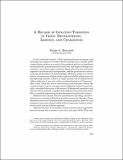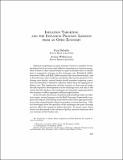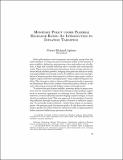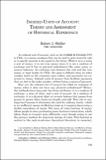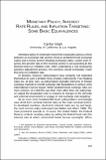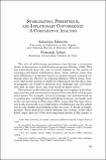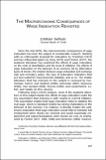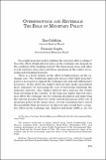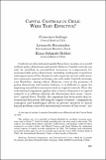Buscar
Mostrando ítems 1-10 de 11
Inflation targeting in Brazil: shocks, backward-looking prices, and IMF conditionality
In mid-January 1990, Brazil abandoned its crawling exchange rate band. Surprisingly enough, the country's economic performance in the aftermath of this episode was much better than expected, given the performance of other emerging market economies after a move toward floating. Despite the large ...
A decadeof inflation targeting in Chile: developments, lessons, and challenges
In the twentieth century, Chile experienced most monetary and exchange rate regimes. Periods of fixed exchange rates usually ended in speculative attacks as a result of inconsistent policies or significant external shocks, generating serious real costs and larger exchange rate volatility.
Inflation targeting and the inflation process: lessons from an open economy
Inflation targeting in an open economy insolves a number of complexities that do not arise with inflation targeting in a clises economy. One of these is that central banks in open economies have to decide how to repond to changes in the exchange rate.
Monetary policy under flexible exchange rates: an introduction to inflation targeting
Both policymakers and economists increasingly accept that the main medium- to long-run goal of monetary policy is the pursuit of price stability, defined as maintaining a low and stable rate of inflation. A high and variable inflation rate is socially and economically costly.
Indexed units of account: theory and assessment of historical experience
An indexed unit of account, such as the Unidad de Fomento (UF) in Chile, is a money analogue that can be used to price items for sale or to specify Amounts to be repaid in the future. While it is in a sense a sort of money, it is not true money since it is not a medium of exchange and it has no physical ...
Monetary policy, interest rate rules, and inflation targeting: some basic equivalences
Monetary policy in small open economies is typically cast as a choice between an exchange rate anchor (fixed or predetermined exchange rates) and a money anchor (floating exchange rates). Under such regimes, the growth rate of the nominal anchor is set according to the desired long-run inflation rate. ...
Stabilization, persistence, and inflationary convergence: a comparative analysis
The role of inflationary persistence has become a recurrent theme in discussions on stabilization programs (Fischer, 1986). This has particularly been the case in recent debates on the merits of exchange-rate-based stabilization plans. Some authors claim that anti-inflationary programs based on ...
The macroeconomic conseguences of wage indexation revisited
Since the mid-1970s, the macroeconomic consequences of wage indexation has been the subject of considerable research. Starting with an enthusiastic proposal for indexation by Friedman (1974) and two influential papers by Gray (1976) and Fischer (1977), the academic literature has examined the effects ...
Overshootings and reversals: the role of monetary policy
Does tight monetary policy stabilize the currency after a collapse?. Does the effect of high interest rates on the exchange rate depend on the condition of the banking system? The East Asian crises and other recent currency crises have put these questions at the center of economic policymaking decisions.
Capital controls in Chile: were they effective?
Controls on international capital flows have no place in a world without policy distortions and markt failures. Capital controls can only be justified as second-best measures to compensate for nonremovable policy distortions, including inadequate regulation and supervision of the financial and corporate ...


